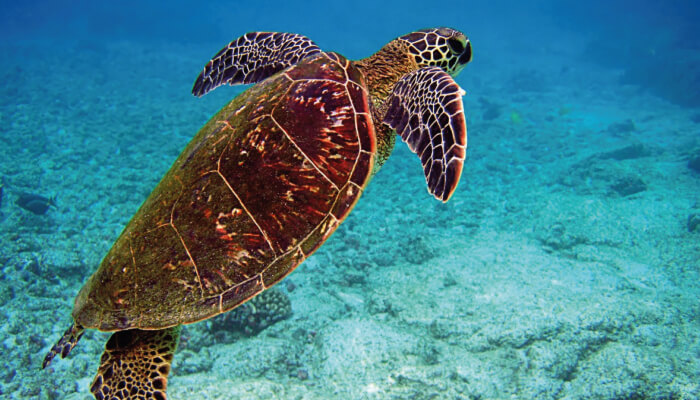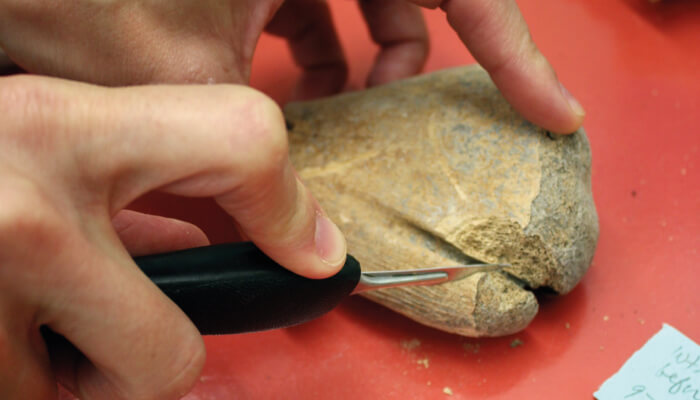Several features of collagen make it an ideal candidate for the taxonomic investigation of archeological bone. Namely, it is abundant, resilient and it harbors species-specific chemical traits. Thus, “collagen fingerprinting” — a technique that extracts chemical signatures using MS — complements morphological examination and DNA sequencing in the acquisition of species identity in ancient bone.

In the case of samples from tropical climates, where hot, humid conditions degrade bones and their biomolecules, collagen fingerprinting is particularly valuable — a fact capitalized on by Virginia Harvey and colleagues. The team (including collaborators from the University of Manchester, University of Florida, Florida Museum of Natural History, University of Copenhagen and National Museums Scotland) applied the technique to examine the proteins preserved in 130 fragmented archeological remains of marine turtle bones up to 2,500 years old from the Caribbean and Florida’s Gulf (1). The work represents the first instance of this technique’s application to marine turtle identification.
“We found that 63 percent of the collagen-containing bones belonged to green turtles, with smaller numbers of hawksbill and ridley turtles,” Harvey said of the results. Interestingly, the team also applied their collagen data to study evolutionary relationships between identified species and found that the phylogenetic relationships generated by these protein sequences were identical to those achieved from genomic data — a finding that supports the application of proteins when it comes to unraveling the secrets of the tree of life. But that’s not all: unusual chemical signatures in four of the bone samples suggest that they may belong to a species of sea turtle no longer present in our oceans today; unfortunately, DNA from these samples was insufficient to provide confirmation.

Why is this research important? As co-investigator Michelle LeFebvre says, “Within the context of understanding human impacts on globally vulnerable or endangered sea turtle species, we are able to use collagen fingerprinting to construct species-specific historical baselines of human capture, use, and consumption of sea turtles through time.” In a broader archeological context, the outcomes support the use of proteins to decipher relationships between species, supporting investigations hindered by physical sample damage or DNA degradation.
Of course, the approach has its limitations. “We sometimes need up to 5 million years of evolutionary divergence to induce detectable chemical changes between collagen species,” says Harvey. And, as is often the case with science, she notes that the research is currently presenting more questions than answers.
References
- VL Harvey et al., “Preserved collagen reveals species identity in archaeological marine turtle bones from Caribbean and Florida sites”, Roy Soc Open Sci, 6 (2019). DOI: 10.1098/rsos.191137




